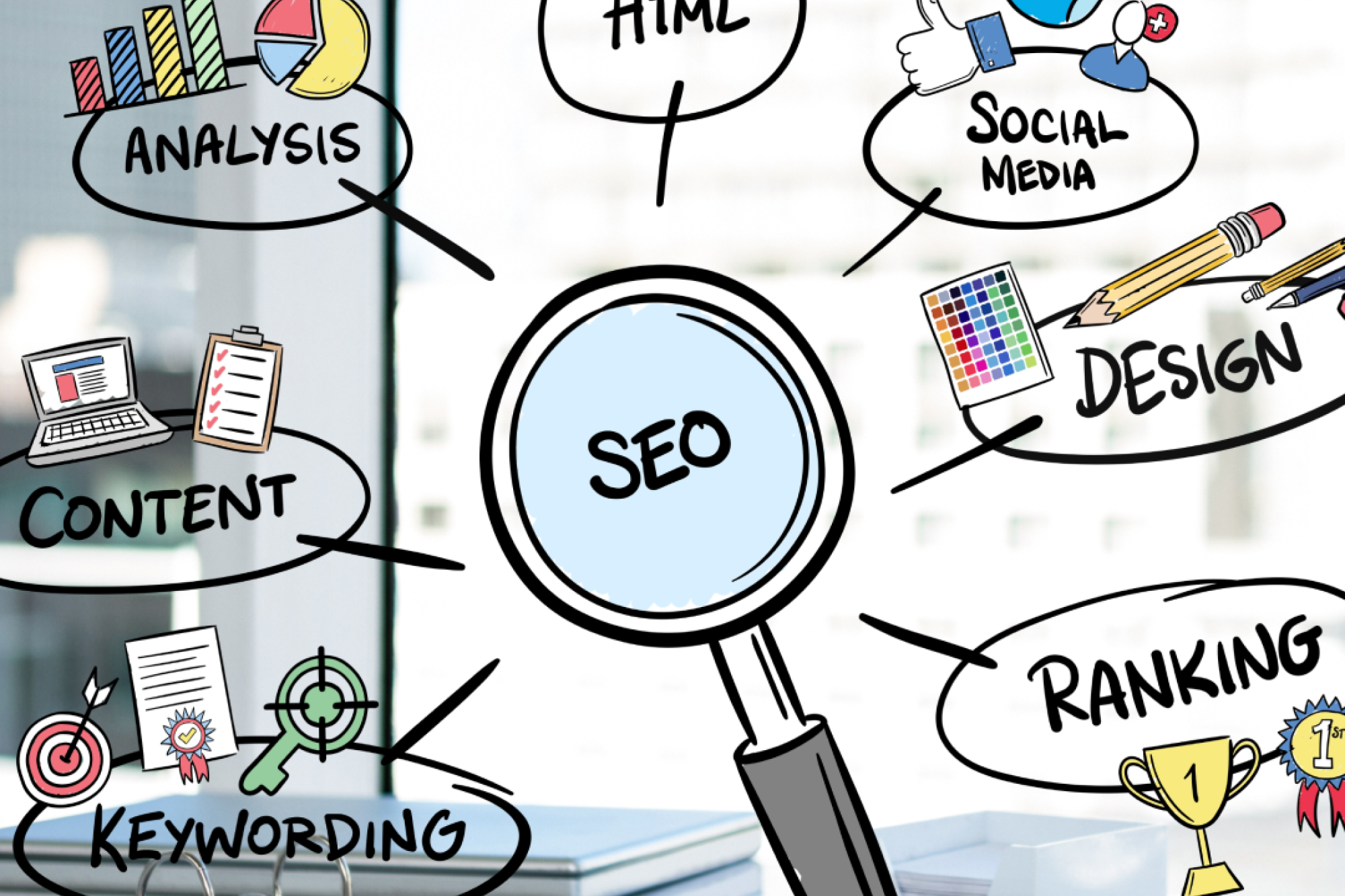Your website is one of the most essential foundations of your online presence. However, there are risks associated with every business website migration, including slow load times, indexing problems, Core Web Vitals drops, and unforeseen ranking fluctuations. For business owners, developers, digital marketers, and IT managers, months of SEO effort can be undone by a poorly thought-out migration or subpar hosting. The good news? You can protect rankings, elevate performance, and use your hosting environment as a competitive advantage if you take the right approach.
This guide examines website hosting tips and methods to guarantee a seamless website migration in 2025, along with helping you avoid SEO ranking drop while maximizing your site’s visibility.
Why Your Hosting Choice Directly Shapes SEO Success In 2025
A reliable hosting environment is the first step towards SEO. If your host is unreliable, slow, or too restrictive, even the best content strategies may not work.
Important domains in which hosting affects SEO while migrating:
- Core Web Vitals: First Input Delay (FID) and Largest Contentful Paint (LCP), two crucial ranking signals, are enhanced by server speed, NVMe storage, and enough RAM.
- Crawl Budget: Some search engines may not be able to crawl every page due to restricted firewalls or limited server resources. Search engines can efficiently index your website if you make sure it has enough bandwidth and uptime.
- Indexation Success: Every page is discoverable and correctly indexed when .htaccess, redirects, DNS settings, and error handling are properly managed.
- Traffic Spike Stability: Unexpected spikes in traffic or viral content can overwhelm unreliable servers, resulting in outages and a decline in ranking. Interruptions are avoided by load balancing and advanced caching.
- Server Security: Malware alerts or hacked servers erode confidence and may have a detrimental impact on rankings. Your users and SEO performance are safeguarded by a robust Web Application Firewall (WAF).
To help your SEO during the migration, give priority to hosting that offers reliable uptime, quick server response, and configuration control.
AI-Driven Search And Technical Performance: Hosting Signals That Matter
As search engines use AI more and more to provide the most relevant results, technical performance signals from your hosting environment are now important ranking factors. By optimizing these signals, you can increase your website’s speed, security, and search engine crawlability, which will help you stay visible and avoid a decline in your SEO ranking.
- Server Speed And TTFB: A quick server response enhances Core Web Vitals and guarantees a seamless transition of business websites.
- Uptime and Reliability: During migration, 99.9% uptime keeps rankings stable and promotes consistent SEO.
- Server-Side Rendering: AI-driven crawlers can better index dynamic content thanks to optimized server-side rendering (SSR).
- Secure Hosting: Trust signals and search visibility are safeguarded by firewalls, SSL, and isolated IPs.
- CDN And Server Location: Several CDNs and data centres speed up load times worldwide, which helps with rankings.
- Effective Caching: During website migration in 2025, server-side caching enhances crawl efficiency and speeds up page delivery.
VPS Hosting For SMBs: Balancing Speed, Cost, And SEO Performance
VPS hosting offers small and mid-sized businesses a reliable and affordable way to avoid SEO ranking drop during migrations.
The benefits of VPS hosting include:
- Dedicated Resources: VPS guarantees that your website isn’t vying for CPU, memory, or bandwidth like shared hosting does.
- Complete SEO Control: Set up security, caching, and SSL settings that affect SEO while migrating.
- Performance and Affordability: Get enterprise-level speeds without having to pay for expensive dedicated servers.
- Reliable Uptime: Even in the event of technical difficulties, your website will stay operational thanks to redundant infrastructure.
- Better Core Web Vitals: Dedicated CPU and RAM speed up loading, which directly helps rankings.
- Fast Connections: Direct connections to large networks lower TTFB, which is important for search engines.
- Improved Security: Server isolation and malware protection guard against performance problems that could harm SEO.
Configuring a VPS for a Successful Website Migration 2025:
- Use Google PageSpeed Insights to examine current performance.
- Choose a VPS plan based on resources and traffic.
- To test migration, use a staging environment.
- Put server-level caching into practice.
- Set up DNS and SSL certificates.
- fAfter the migration, keep an eye on metrics to make sure there is no decline in ranking.
Dedicated Hosting For Enterprises: Scaling SEO Without Compromising Speed
To maintain performance and SEO integrity, large businesses, SaaS platforms, and resource-intensive websites need dedicated hosting.
Advantages for business SEO during migration:
- Complete Server Control: Adjust caching rules, redirects, and server configurations.
- Better Crawlability: Search engines can efficiently index thousands of pages thanks to powerful servers.
- Reliable Global Uptime: Consistent worldwide uptime guarantees accessibility for bots and users everywhere.
- High Processing Power: Heavy crawler activity is handled by dedicated CPU cores.
- Several Dedicated IPs: Control SaaS platforms and API integrations while avoiding shared IP problems.
- Advanced Security Controls: Advanced security controls include access control, DDoS protection, and custom firewall rules.
- Real-time Server Monitoring: Spot server problems and crawl surges before they impact rankings.
- Scalability and Load Balancing: Prepare for future expansion while effectively managing traffic spikes.
Checklist for Enterprise Migration:
- Make a thorough site audit.
- Record the plugins, custom code, and current configuration.
- Before going live, test every modification in a staging environment.
- To preserve link equity, plan URL redirects.
- eAfter launch, keep an eye on TTFB, uptime, and Core Web Vitals.
Shared Hosting Risks In 2025: Why Cheap Plans Can Break Rankings
Even though shared hosting can save money up front, there are serious risks involved in a business website migration and continuing operations.
Among the risks are:
- Limited Resources: During a migration, CPU, memory, and bandwidth limits may negatively impact SEO. These restrictions may cause pages to load more slowly, which will negatively affect your Core Web Vitals and search engine rankings.
- Resource Competition: Unpredictably, other websites on the server may cause your site to lag. Your website may encounter latency spikes that search engines perceive as subpar performance when several sites vie for the same resources.
- Neighbour Issues: When heavily trafficked websites share a server, performance deteriorates. The traffic spikes of nearby websites can indirectly result in website migration 2025 problems and ranking declines, even if your site is optimized.
- Outages and Collateral Damage: Email, domains, and website performance are all impacted by outages. In addition to annoying users, frequent outages give search engines a signal of unreliability, which makes it more difficult to keep your rankings high.
- Limited Logs and Diagnostics: It can be difficult to troubleshoot technical SEO issues. Without thorough server logs, it is much more difficult to spot crawl errors or indexing issues during migration, which could result in a decline in SEO ranking.
- Restricted Configuration Access: Advanced SEO optimizations are prevented by restricted configuration access. Your ability to apply custom caching, redirects, or security rules that are necessary to safeguard your SEO during the migration may be restricted by this restriction.
- Inability to Adapt to AI Crawlers: Shared environments are unable to adapt to changing SEO tactics. Shared hosting might keep your website from reaching its maximum visibility in 2025 since technical performance is given priority by AI-driven search engines.
By 2025, shared hosting is a strategic liability for user experience and rankings rather than merely a technical decision.
Website Migration Best Practices And Checklist For 2025
Planning guarantees that the migration of your company website won’t negatively impact SEO.
How to protect SEO during migration:
- Benchmark Core Web Vitals and perform a performance audit.
- Depending on website complexity and traffic, select VPS or dedicated hosting.
- All server configurations, plugins, and custom code should be planned and documented.
- Create a testing staging environment.
- Set up DNS, SSL certificates, and server-level caching.
- To maintain link equity, put in place a thorough redirect map.
- Track the following post-migration metrics: indexing status, page speed, TTFB, and uptime.
- To monitor any changes in ranking, use Google Search Console and analytics.
By following this checklist, you can reduce the chance of an SEO ranking drop and make sure your migration promotes visibility and growth.
How MetroMax BPM Supports Seamless Hosting And Migration
MetroMax BPM specializes in helping companies with their website migration in 2025, with an emphasis on technical performance and SEO integrity. From server optimization and hosting recommendations to migration planning and post-launch monitoring, our team of professionals provides end-to-end support. MetroMax BPM guarantees that your website stays fast, secure, and visible in search engines by utilizing tried-and-true website hosting advice and monitoring tools. This helps businesses avoid SEO ranking drop while scaling effectively.
Summary
More than just transferring files is needed for a business website migration to be successful in 2025; careful planning, the appropriate hosting environment, and technical SEO attention are also necessary. Businesses can avoid SEO ranking drop and preserve visibility in search results by adhering to tried-and-true website hosting advice, selecting VPS or dedicated hosting over shared solutions, and keeping an eye on performance during the migration. By utilizing professional advice, such as that provided by MetroMax BPM, you can turn your migration into a competitive advantage and guarantee that your website stays safe, fast, and search engine optimized.














